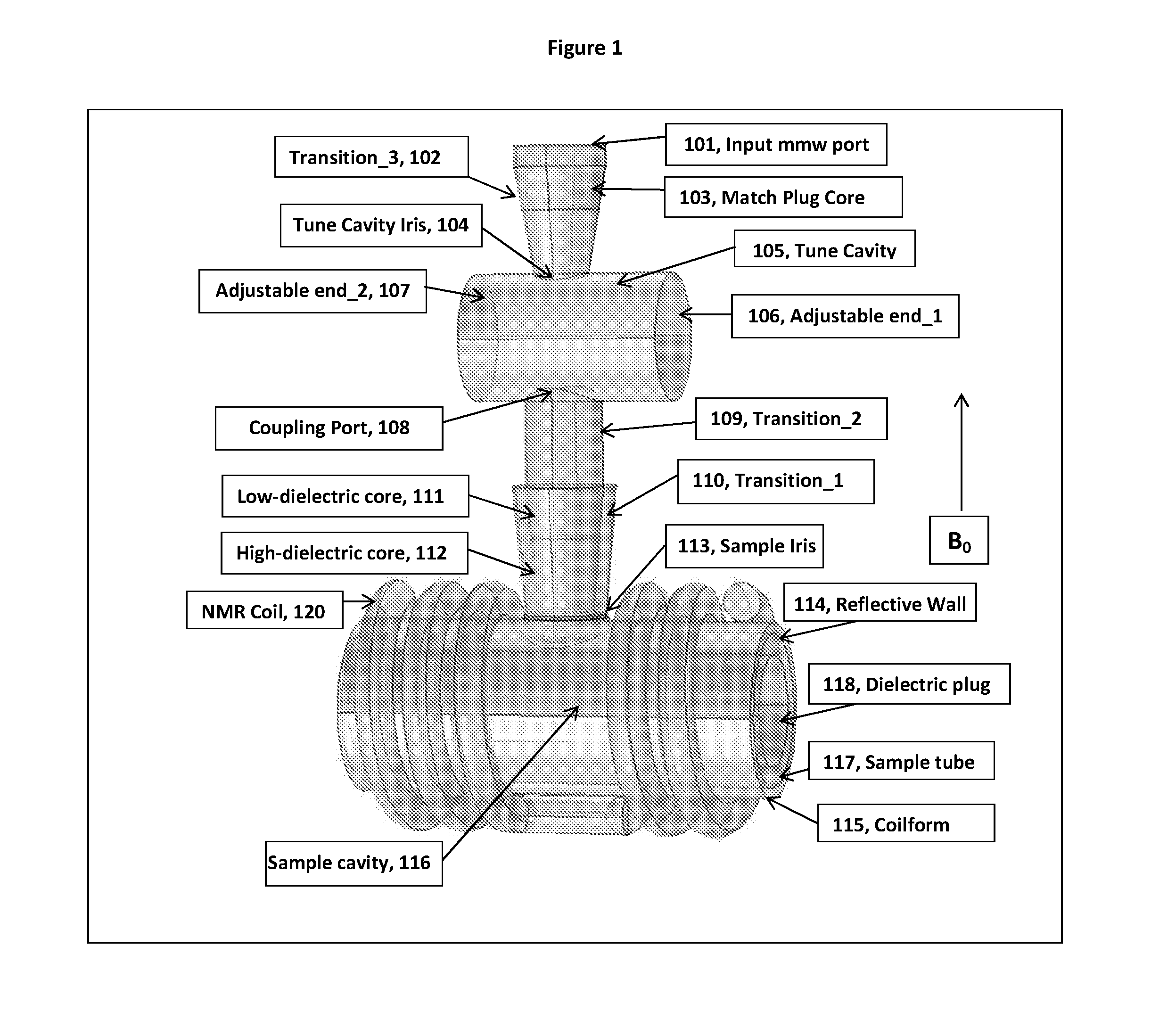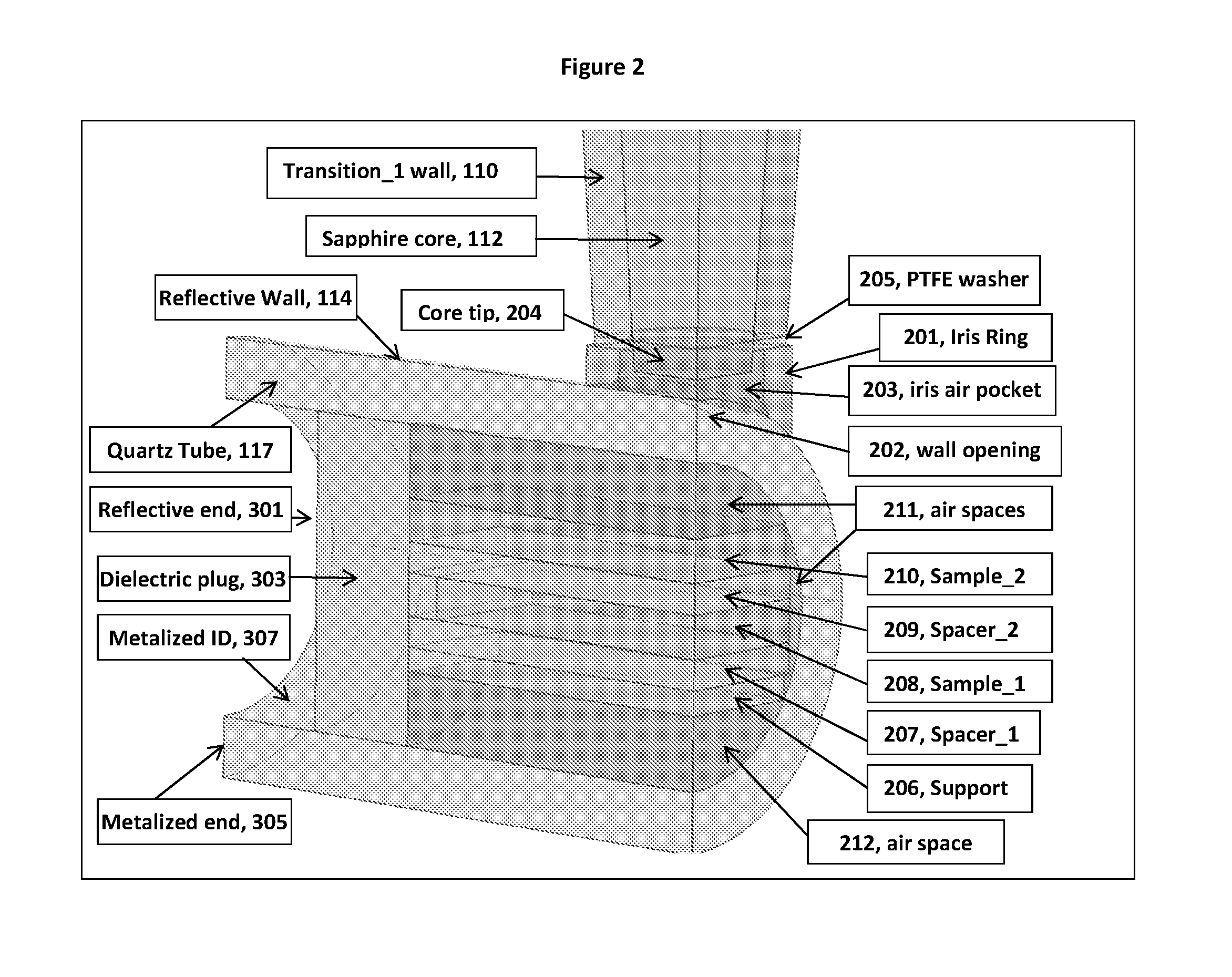Tunable microwave resonator for static dynamic nuclear polarization (DNP)
a nuclear polarization and nuclear polarization technology, applied in the direction of magnetic measurement, magnetic variable regulation, instruments, etc., can solve the problems of poor baseline nmr performance in s/n, poor spectral resolution, low sensitivity, etc., and achieve the effect of efficient and easy matching of complex bounded resonant systems
- Summary
- Abstract
- Description
- Claims
- Application Information
AI Technical Summary
Benefits of technology
Problems solved by technology
Method used
Image
Examples
Embodiment Construction
[0074]The perspective surface-rendered view with transparency in FIG. 1 (from a COMSOL simulation at 200 GHz) provides an overview showing most of the essential components (and some that are not essential) of a generic tunable static DNP cavity, in what is close to the YZ plane.
[0075]As is standard practice in the presentation of field simulations, only the boundaries (usually impedance boundaries) of the simulation spaces are shown in most of the figures—with a few exceptions as noted. The bulk metal in the tubes and discs that define the impedance boundaries is irrelevant to the rf simulations—though in some cases it may be relevant to DC magnetic effects. Again, the figures are domain boundaries, which in most cases are the internal boundaries of surrounding metal parts, whose external boundaries are mostly irrelevant.
[0076]The probe head including the tunable static DNP cavity is designed to be inserted into the bore of a superconducting magnet generating polarizing field B0, wh...
PUM
 Login to View More
Login to View More Abstract
Description
Claims
Application Information
 Login to View More
Login to View More - R&D
- Intellectual Property
- Life Sciences
- Materials
- Tech Scout
- Unparalleled Data Quality
- Higher Quality Content
- 60% Fewer Hallucinations
Browse by: Latest US Patents, China's latest patents, Technical Efficacy Thesaurus, Application Domain, Technology Topic, Popular Technical Reports.
© 2025 PatSnap. All rights reserved.Legal|Privacy policy|Modern Slavery Act Transparency Statement|Sitemap|About US| Contact US: help@patsnap.com



